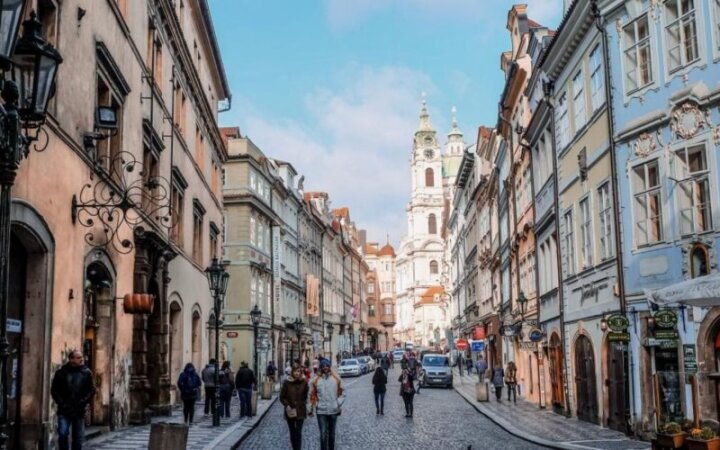Prague: The Circular European Capital

Cities are the consumption centres of the world: hotspots of resource use and global greenhouse gas (GHG) emissions. They’re also rapidly growing – Prague’s population alone has jumped by 11% in the past 40 years.
The circular economy, with its suite of strategies suitable for urban policymakers, can deliver substantial climate mitigation opportunities, social benefits and economic opportunities.
Today, Prague boasts a population of nearly 1.5 million and an economy that has swapped industrialism for a high-tech, trade and services-oriented character.
The city has placed the circular economy at the heart of its city planning and climate mitigation ambitions.
A second life for the city’s bulky waste
Each year, Prague households consume approximately 307,000 tonnes of non-food products. Of this, nearly 10% is bulky waste – materials or items too large for household waste, such as electrical goods, appliances and furniture – which are destined for landfill. And as the average household income has risen, so has the level of tossed bulky waste.
Potentially, 70% of this can be reused, giving furniture and appliances a second life and reducing the overall demands for brand new products.
Prague is also building a growing network of Re-Use Points throughout the city: cashing in on the value this ‘waste’ provides when the circular strategies of reuse, refurbish and repair are utilised. In only half a year of the pilot being active, nearly 2,000 pre-loved items were processed: the equivalent of 14 tonnes.
These reuse points have been integrated into collection yards – so far, three out of the 19 in the city – and upgraded to feel vibrant and accessible for all citizens. Praguers can drop off their unwanted yet still-functional furniture, sports equipment or appliances, amongst other items, which are then uploaded to an online portal and can be collected for free by residents, NGOs and charities.
Swapping in food waste for fertiliser and biogas
In Prague, households consume more than 950,000 tonnes of food each year – with roughly 100,000 tonnes of domestic food and kitchen waste entering low-value recycling streams such as being burned for energy.
To use its tonnes of food waste as a resource, Prague set the ambitious goal of separating 70% of municipal waste at the source by 2035; current separation rates stand at 31%. To start, it became the first Czech city to implement household food waste collection. This is currently in the pilot phase in three districts and hopes to be city-wide by 2026.
The collected food waste is converted into biogas and used to power waste management trucks.
Also, excess energy will be pumped back into the grid and excess waste transformed into fertiliser for local agricultural projects.
Only organic farming for acres of city-land
We’ve already seen how Prague is tackling household food waste, but it’s also innovating with a circular procurement strategy to regenerate ecosystems and provide healthy food for the locality on city-owned land.
The city owns 1,650 hectares of agricultural land – currently, 500 hectares of this is leased to farmers – yet it comes with a sustainable catch.
Farmers must follow organic and circular agricultural principles, namely: no pesticides, no fungicides, use of organic fertilisers and respecting crop rotation. Engaging with farmers and giving priority to organic and circular practices is a strong avenue for cities to take in moving to a circular food system. Co-benefits of the practice can include diversifying a city’s food supply, fostering biodiversity, reducing packaging needs and shortening supply chains.



